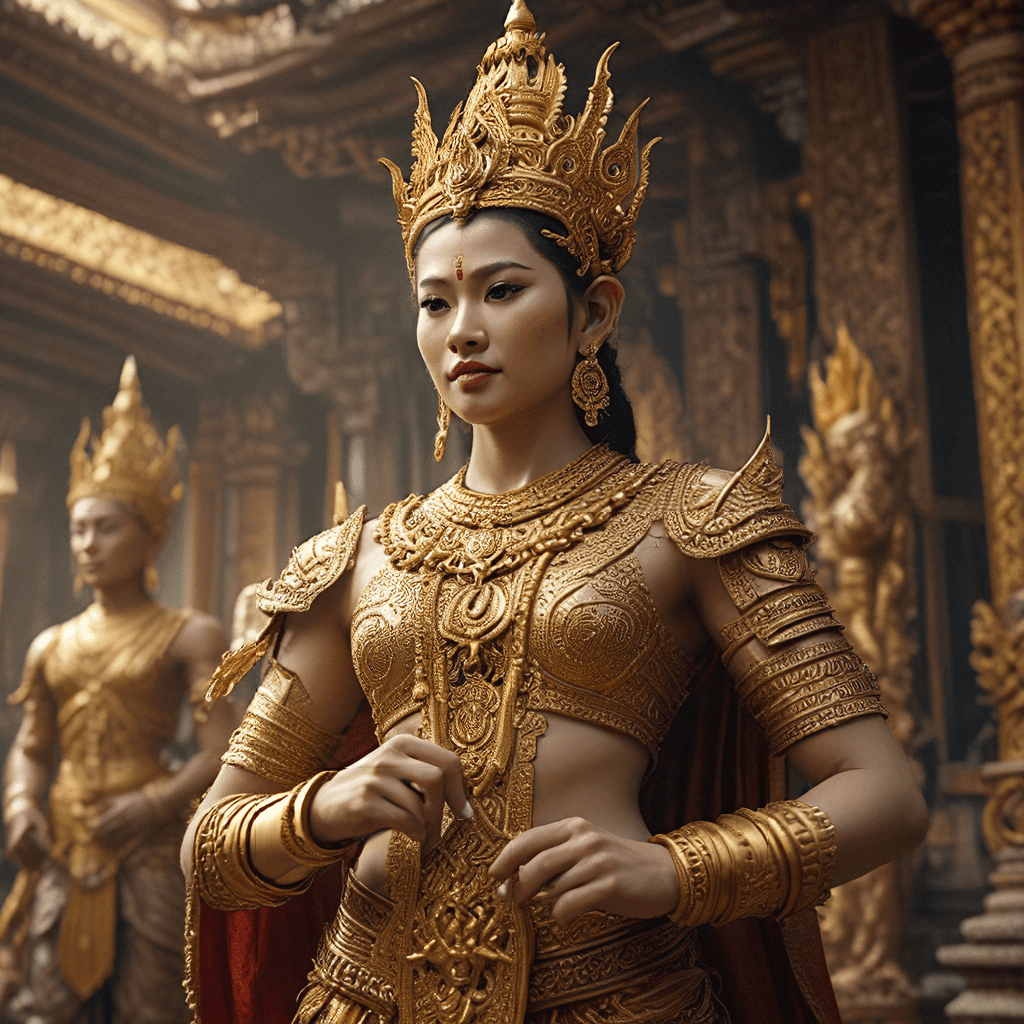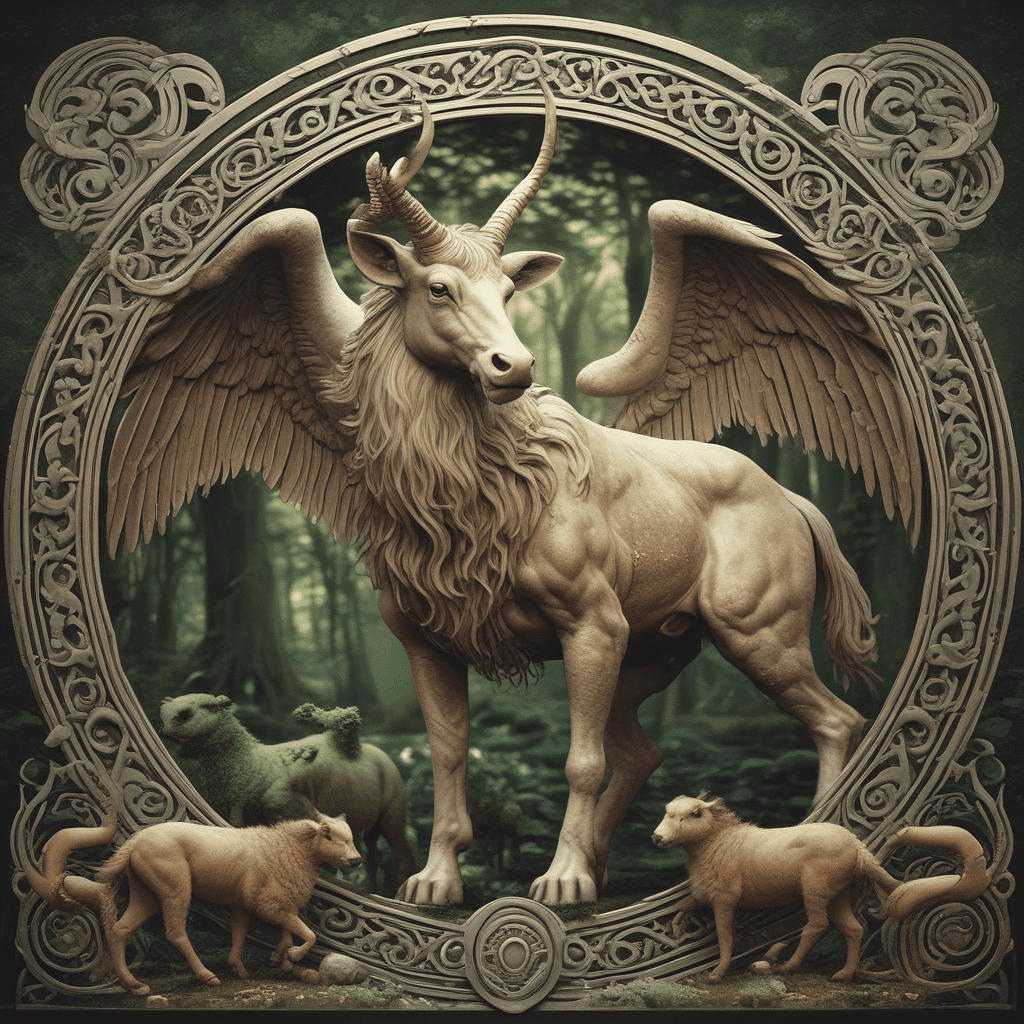Thai Mythology: A Foundation for Identity
Thai mythology plays a vital role in shaping Thai society and culture, providing a rich tapestry of beliefs, values, and traditions that have endured for centuries. These stories, passed down through generations, offer a framework for understanding the world, navigating social interactions, and defining Thai identity. They provide a sense of belonging and connection to a shared heritage, fostering a sense of national pride and cultural continuity.
From the awe-inspiring tales of divine beings to the captivating narratives of legendary heroes, Thai mythology offers insights into the Thai worldview, their understanding of the natural world, and their place within it. It provides a moral compass, outlining the principles of right and wrong, and illustrating the consequences of our actions.
Origins and Development of Thai Mythology
Thai mythology has its roots in a blend of indigenous beliefs and influences from neighboring cultures, particularly India and China. Ancient animistic beliefs, which revered spirits and nature, formed the foundation of early Thai mythology. These beliefs were gradually integrated with the influx of Hindu and Buddhist ideologies, resulting in a complex and dynamic system of beliefs.
Notable influences from the Indian epics, the Ramayana and Mahabharata, are evident in Thai mythology. These stories introduced concepts like reincarnation, karma, and divine beings, enriching the existing mythological framework. Buddhism, with its emphasis on moral conduct and enlightenment, further shaped Thai mythology, emphasizing the importance of good deeds and the pursuit of spiritual liberation.
Key Myths and Their Significance
Thai mythology is replete with captivating stories that embody Thai cultural values and beliefs. One of the most prominent and influential myths is the story of Phra Ruang, the legendary founder of the Sukhothai Kingdom. This tale highlights the importance of leadership, courage, and justice, serving as a model for rulers and subjects alike.
Another important myth is the story of Inao, the beautiful and powerful goddess of the sky. Inao represents the feminine principle and embodies the forces of nature, showcasing the importance of respecting the natural world and its power. These myths, among others, contribute to the Thai understanding of history, cosmology, and morality.
The Role of Myths in Social Order and Hierarchy
Thai mythology plays a significant role in maintaining social order and hierarchy. The stories often depict a clear distinction between those in power, such as kings and deities, and ordinary people. These narratives reinforce the idea of a divinely ordained social hierarchy, with rulers possessing divine authority and subjects obligated to respect their position.
Myths like the story of Phra Ruang reinforce the concept of a righteous king who protects his people and upholds justice. This reinforces the societal expectation of obedience and loyalty to the king as a divinely chosen leader. The mythology also dictates social roles and expectations, defining the behaviors and responsibilities associated with different social classes.
Mythology and Ritual Practices
Thai mythology is deeply interwoven with various rituals and festivals. Many ceremonies are based on ancient beliefs and traditions, often involving offerings to deities or spirits. The Songkran festival, for example, celebrates the new year with water-splashing rituals that are believed to cleanse and purify.
These rituals are rooted in myths and legends, offering a tangible connection to the spiritual realm. They serve as a reminder of the importance of maintaining harmony with the divine forces and seeking their blessings for prosperity and well-being. These practices contribute to the preservation and transmission of Thai cultural traditions, ensuring their relevance across generations.
Mythology in Thai Art and Literature
Thai mythology has profoundly influenced Thai art and literature, serving as a rich source of inspiration for creative expression. From traditional dance and music to elaborate temples and intricate sculptures, Thai art forms are often infused with mythological themes and imagery.
For example, the Ramayana, a Hindu epic widely revered in Thailand, is a central theme in Thai classical dance, known as Khon. Performed with elaborate costumes and masks, Khon narrates the story of Rama, Sita, and Hanuman, showcasing the triumph of good over evil, loyalty, and self-sacrifice.
Thai literature, too, is deeply intertwined with mythology. Ancient tales of deities, heroes, and mythical creatures, like the Naga (serpent deities), are frequently woven into poems, plays, and novels. These stories provide a unique window into Thai cultural values, beliefs, and the historical context of their creation. They also serve to preserve Thai traditions and folklore, transmitting them across generations.
The Influence of Buddhism on Thai Mythology
Buddhism, a major religion in Thailand, has significantly influenced Thai mythology, blending it with its own philosophical and spiritual teachings. While ancient animistic beliefs and Hindu influences remain prominent, Buddhist concepts of karma, rebirth, and enlightenment have been seamlessly integrated into Thai mythology.
This integration is evident in the stories of past lives and the concept of merit-making, which are integral to Buddhist teachings and are often woven into Thai myths. For example, the myth of Phra Ruang incorporates Buddhist concepts by emphasizing the importance of good deeds, ethical conduct, and compassion, which are essential for attaining enlightenment.
The influence of Buddhism has also led to the emergence of new deities and mythical figures associated with Buddhist beliefs. Phra Phrom, the god of creation and prosperity, is a prominent example. This amalgamation of Buddhist and indigenous belief systems has created a unique and rich tapestry of beliefs in Thai society.
Mythology and the Concept of Karma and Rebirth
The concept of karma and rebirth, central to Buddhist philosophy, is deeply embedded in Thai mythology. These ideas shape the Thai understanding of cause and effect, shaping their actions and moral compass. Many Thai myths illustrate the consequences of good and bad deeds, reinforcing the belief that actions have repercussions in this life and in future lives.
The stories often feature characters who experience the cycle of birth, death, and rebirth, demonstrating the consequences of their actions and the importance of ethical behavior. These myths, imbued with Buddhist principles, serve as moral lessons, guiding individuals towards a path of righteousness and spiritual progress.
The Enduring Relevance of Thai Mythology in Modern Society
Although modern life in Thailand is infused with global influences, Thai mythology continues to play a significant role in shaping the lives of its people. These stories provide a strong sense of cultural identity and pride, connecting individuals to their heritage and fostering a sense of belonging.
Despite the rapid pace of modernization, traditional rituals and festivals based on Thai mythology remain integral parts of Thai culture. These events are not just celebrations but also serve as reminders of the values and beliefs embedded in these ancient stories.
Modern Thai literature, cinema, and even popular media continue to draw inspiration from Thai mythology, reimagining and reinterpreting these stories to resonate with contemporary audiences. This dynamic interaction between tradition and modernity ensures that Thai mythology remains a vibrant and relevant aspect of Thai society, providing a framework for understanding the present and navigating the future.
Theories on the Role of Myths in Shaping Cultures
Mythology, across cultures, plays a fundamental role in shaping societies and cultures. It serves as a powerful tool for transmitting values, beliefs, and history through generations. Several theories explain this phenomenon:
- The Structuralist Theory: This theory suggests that myths reflect the underlying structures of a society, mirroring its social organization, power dynamics, and cultural norms.
- The Functionalist Theory: This theory emphasizes the role of myths in fulfilling social functions, such as maintaining order, resolving conflict, and providing a sense of belonging.
- The Psychoanalytic Theory: This theory focuses on the psychological significance of myths, suggesting that they represent the unconscious desires, fears, and anxieties of a society.
These theories highlight the multifaceted role of mythology in shaping cultures, explaining how these stories, though often fantastical, reflect the realities and aspirations of the people who create and share them.
FAQ
1. What are some of the most well-known Thai myths?
Some of the most well-known Thai myths include the story of Phra Ruang, the legendary founder of the Sukhothai Kingdom, the story of Inao, the goddess of the sky, and the story of Naga, serpent deities associated with water and fertility.
2. How does Thai mythology influence everyday life in Thailand?
Thai mythology influences everyday life through traditional rituals and festivals, like Songkran, the Thai New Year celebration, and the Loy Krathong festival, where people release floating lanterns on water. These celebrations are rooted in ancient myths and beliefs.
3. Why is it important to study Thai mythology?
Studying Thai mythology provides insights into Thai cultural values, beliefs, and history. It helps us understand the Thai worldview, their understanding of the natural world, and their place within it.
4. How is Thai mythology changing with the times?
While traditional Thai mythology remains influential, it is also being reinterpreted and reimagined through modern literature, cinema, and popular media, ensuring that it remains relevant and engaging to contemporary audiences.




